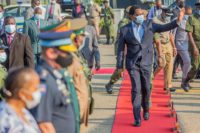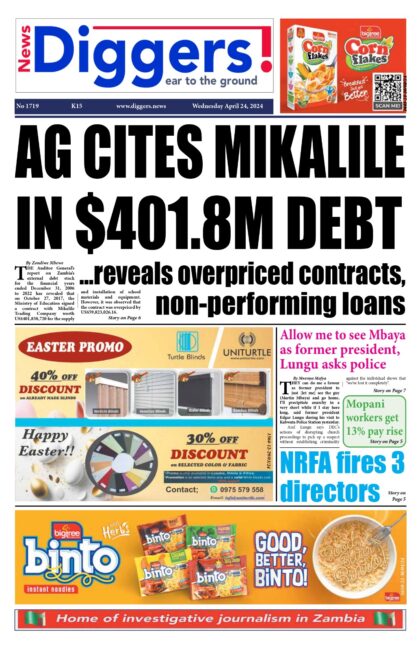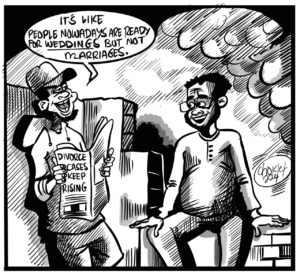Zambia’s annual rate of inflation is expected to remain in double-digits this year owing to the hiked electricity tariffs and fuel pump prices, says FNB Zambia.
In a 2020 economic outlook released, Tuesday, FNB stated that inflation is expected to remain elevated in 2020 on account of higher electricity tariffs and fuel pump prices adjusted by the Energy Regulation Board (ERB) on December 27.
Inflation closed 2019 at 11.7 per cent compared to opening the year at 7.9 per cent, triggered by escalating food prices on the back of a second-successive drought and poor maize harvest.
Zambia Statistics Agency (ZSA) data reveals that Zambia’s annual rate of inflation of 11.7 per cent recorded last month peaked to an over three-year high since October, 2016, when inflation was 12.5 per cent before it dropped to close 2016 at 7.5 per cent.
The annual rate of inflation has sustained a rise far above the Bank of Zambia’s (BoZ) targeted corridor of 6-8 per cent, and closed the year in double-digit territory on the back of tightened monetary policy.
In addition to the BoZ’s hiked the Monetary Policy Rate (MPR) by 125 basis points to 11.50 per cent to arrest the escalating inflation, the Statutory Reserve Ratio (SRR) was also increased to nine per cent from five per cent, effective December 23, to stem kwacha volatility.
“The year 2019 has come to an end and it can only be described as the year of uncertainty. Inflation is projected to remain elevated in 2020 due to increase in electricity tariffs and hike in fuel prices. With inflation being elevated, the central bank is certainly poised to continue with monetary policy tightening to control inflation,” FNB stated.
“Our research team are forecasting a USD-ZMW rate of 15.13 and a ZAR-ZMW rate of 0.9761 by the end of 2020. Our research team is also forecasting a GDP growth of 2.6 per cent for 2020.”
FNB also forecast that copper prices on the international market, which closed the year at around US $6,200 per tonne, were likely to remain high as China and the United States continued to make progress on a trade deal.
“Copper price is more likely to remain high as China and the US try to nail phase 2 of a trade agreement,” stated FNB.
“Going into 2020, the major events and risks to look out for include; USA/China trade war; uncertainty around BREXIT; copper prices, which have since been slowly going up; El’Nino effect; external debt sustainability; increase of taxes and mining companies cutting some jobs; interest rates increase; kwacha depreciation; increase in inflation rate; electricity production, which is highly dependent on hydro might be affected by the El’Nino weather pattern; fiscal consolidation and Zambia accessing an IMF bailout package. Government plans to spend ZMW21.1bn (USD 1.5bn) servicing external debt in 2020; domestic debt service in 2020 will be ZMW12.6bn (USD 900m); dismantling of domestic arrears has been allocated ZMW2.3bn (USD 164m).”













One Response
These goons don’t listen to anyone